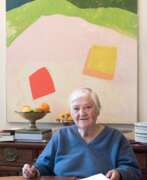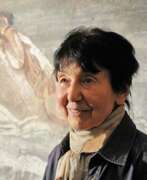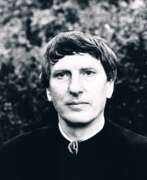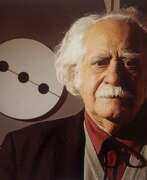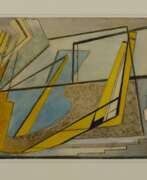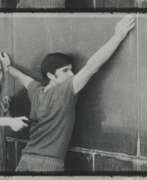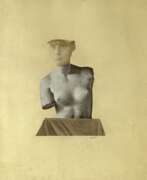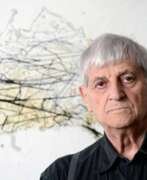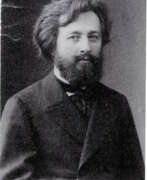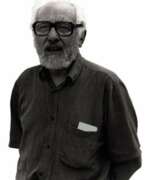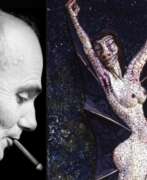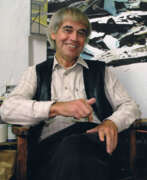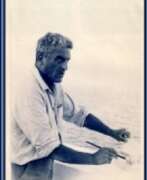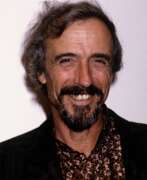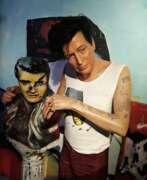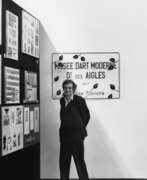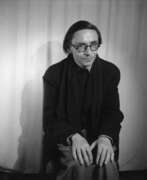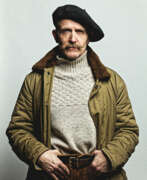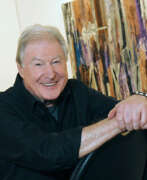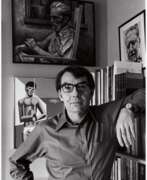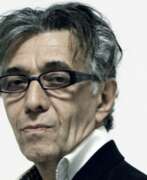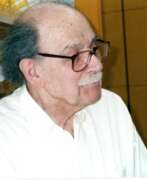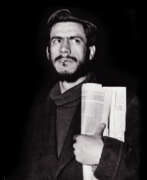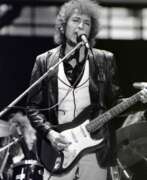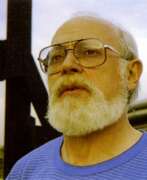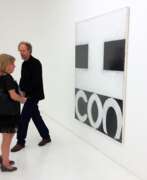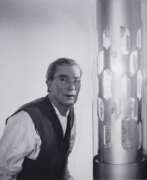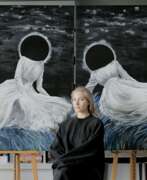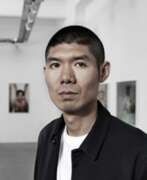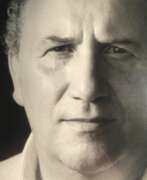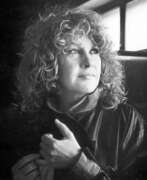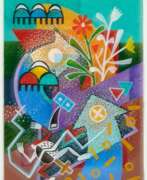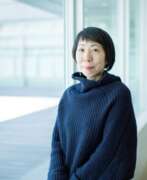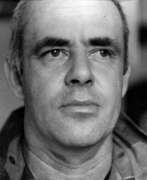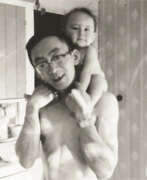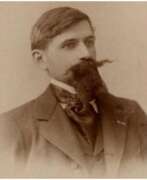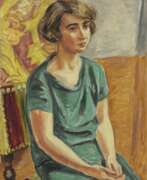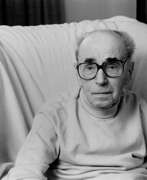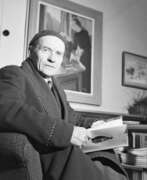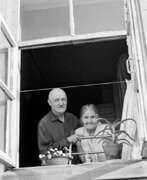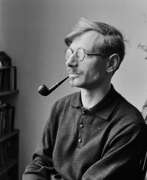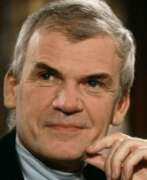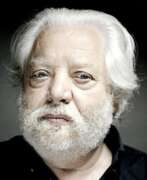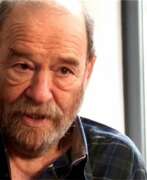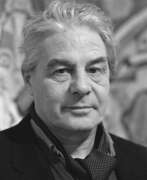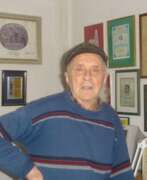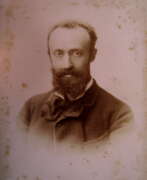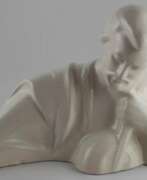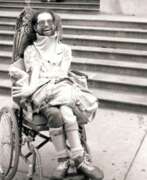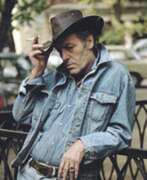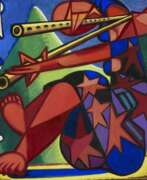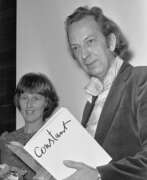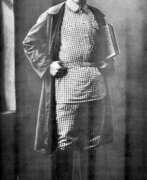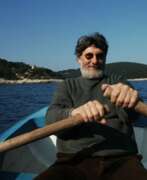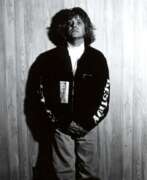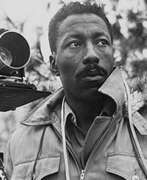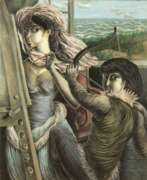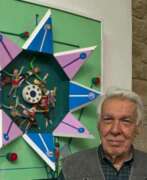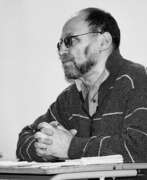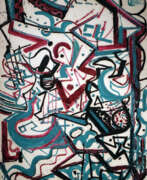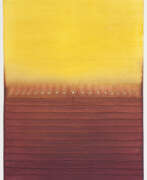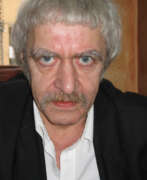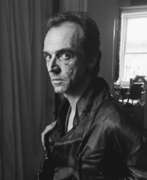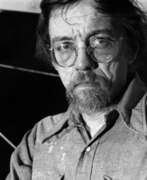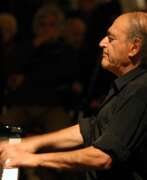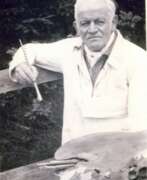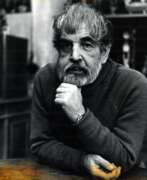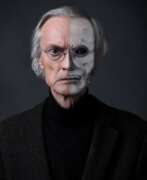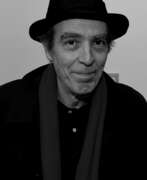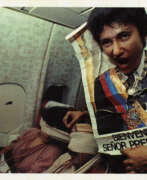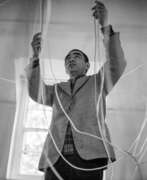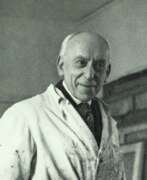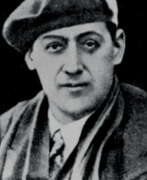Poets Contemporary art
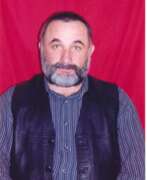

Issa Abasovich Barkhanoyev (Russian: Исса Абасович Барханоев) was a Soviet and Russian Ingush artist of the last quarter of the twentieth and early twenty-first centuries. He is known as a painter, draughtsman, landscape painter, genre painter and poet, a self-taught artist.
Issa Barkhanoyev created more than 500 paintings during his career, in which, according to critics, he skillfully conveyed his deep thoughts and feelings through images and symbols, and these works of art epitomize spirituality and life philosophy. The works of the folk artist are in museums of the Republic of Ingushetia and private collections.
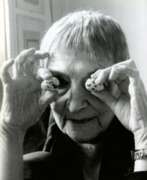

Mirella Bentivoglio is an Italian painter, sculptor and poet, representative of visual concrete poetry.
She was trained as an art historian and artist in Italy, Switzerland and England, and in the 1960s she joined the concrete poetry movement and began to use elements of the alphabet to create expressive images. A few years later, Bentivoglio became increasingly interested in sculpture, turning letters into three-dimensional forms. In many of her later works, two images, a book and an egg, began to recur.


Gastone Biggi was an Italian painter, sculptor, writer, poet, and musicologist.
Biggi combined painting with his activities as an art writer and musicologist. In 1962 his key work The Birth of the Point was published, theorizing the study of the sign module, which he would develop throughout his life. That same year he formed Group 1.
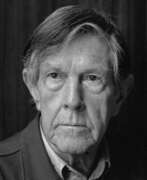

John Milton Cage Jr. is an American composer, philosopher, poet, musicologist, and artist. Cage is considered one of the leading figures of the post-war avant-garde.
Born in the United States, he studied architecture in Europe, but music and painting seemed more interesting to him and he has achieved impressive success there. John Cage is considered a pioneer of uncertainty in music and the unconventional use of instruments, and is highly regarded for his paintings and prints. In addition, he played a crucial role in the development of modern dance and performance art.
His father John Milton Cage (1886-1964) was an inventor.
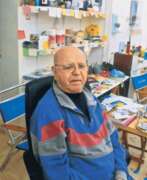

Pavlos Dionyssopoulos was a Greek artist born in Filiatra, Greece in 1930 and passed away in 2019. He was known for his unique and colorful abstract paintings, which were influenced by the art movements of the 20th century, including surrealism and abstract expressionism.
Dionyssopoulos studied art in Greece and later in France, where he was exposed to the works of famous artists such as Pablo Picasso and Henri Matisse. His style evolved throughout his career, starting with realistic portraits and landscapes before moving towards abstract art.
He held numerous solo and group exhibitions in Greece and internationally, including in Paris, New York, and Tokyo. His works can be found in private collections and museums around the world.
Dionyssopoulos was a member of the Greek Chamber of Fine Arts and was awarded the "Order of the Phoenix" by the Greek government for his contributions to the arts. He was also a writer and poet, and his poetry was published in several Greek literary journals.
Today, Pavlos Dionyssopoulos is considered one of the most important Greek artists of the 20th century, known for his unique style and contributions to the development of abstract art in Greece.
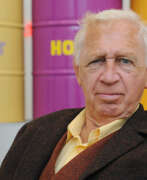

Jimmie Durham was an American sculptor, essayist and poet. He was active in the United States in the civil rights movements of African Americans and Native Americans in the 1960s and 1970s, serving on the central council of the American Indian Movement (AIM). He returned to working at art while living in New York City. His work has been extensively exhibited. Durham also received the Günther-Peill-Preis (2003), the Foundation for Contemporary Arts Robert Rauschenberg Award (2017), and the 58th Venice Biennale's Golden Lion for lifetime achievement (2019).
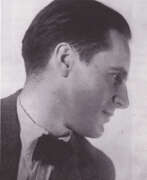

Marc Eemans was a Belgian painter, poet and art historian, one of the pioneers of constructivist abstraction.
In 1925, Eemans joined the Surrealist artists Dali and Magritte, with whom he held joint exhibitions. And soon the poet's fame eclipsed his success as a painter. In 1930, Eemans made his debut as a poet in Vergeten te worden: 10 lijnvormen, beïnvloed Door 10 woordvormen. Influenced by Symbolism, he calls his poetry "gnostic surrealism". In 1938 he publishes a collection of poems, Visioen Woli, and others.
His artistic and political stance during World War II led to a break with Magritte and others.
In addition to poetry collections, Eemans wrote essays on a variety of subjects, including modern painting and architecture.
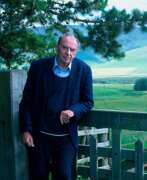

Ian Hamilton Finlay was a Scottish poet, writer, artist and gardener.
Finlay's work is notable for a number of recurring themes: a penchant for classical writers (especially Virgil); a concern with fishing and the sea; an interest in the French Revolution; and a continual revisiting of World War II and the memento mori Latin phrase Et in Arcadia ego.
Finlay was nominated for the Turner Prize in 1985. He was awarded honorary doctorates from Aberdeen University in 1987, Heriot-Watt University in 1993 and the University of Glasgow in 2001, and an honorary and/or visiting professorship from the University of Dundee in 1999. The French Communist Party presented him with a bust of Saint-Just in 1991. He received the Scottish Horticultural Medal from the Royal Caledonian Horticultural Society in 2002, and the Scottish Arts Council Creative Scotland Award in 2003.
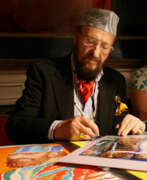

Ernst Fuchs was an Austrian painter, draftsman, printmaker, sculptor, architect, stage designer, composer, poet, and one of the founders of the Vienna School of Fantastic Realism. In 1972, he acquired the derelict Otto Wagner Villa in Hütteldorf, which he restored and transformed. The villa was inaugurated as the Ernst Fuchs Museum in 1988.
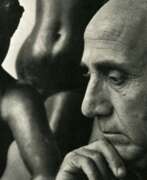

Emilio Greco was an Italian realist sculptor, draftsman, writer and poet.
At the age of 13, Greco was apprenticed to a mason and later studied at the Academy of Fine Arts in Palermo. His first solo exhibition took place in 1946. Emilio Greco created monumental figurative works in bronze and marble, park sculptures, primarily nude female figures and portraits. His sculptures are characterized by refined, elongated forms in the tradition of Italian mannerism. Notable among them is the monument to the character Pinocchio (Pinocchio and the Fairy) for the town of Collodi.
Greco also designed one of the bronze doors of the cathedral in Orvieto and the monument to Pope John XXIII in St. Peter's Basilica. In 1974, a Greco Garden dedicated to his works was opened at the Open Air Museum in Hakone, Japan.
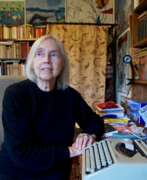

Aldona Maria Gustas is a German poet, illustrator, and graphic designer of Lithuanian origin.
In 1972, Gustas co-founded an art forum in West Berlin, the Berliner Malerpoeten, a group of artists who simultaneously wrote and illustrated their works.


Jean Milo, real name Emile van Gindertael, is a Belgian writer, painter and gallery owner.
The artist's work reflects his evolution from refined impressionism to pure abstraction. Influenced by French Cubism, Milo simplified forms in still lifes and interiors, but continued to paint dynamic Impressionist interiors and cityscapes. Jean Milo was director of the Belgian gallery Le Centaure, and in 1952 he helped found the group Art abstrait.
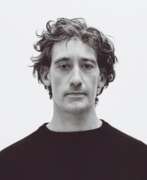

Seth Price is a New York City-based multi-disciplinary post-conceptual artist. He lives and works in New York City.
Seth Price is represented by Reena Spaulings Fine Art and Friedrich Petzel Gallery in New York City, Galerie Chantal Crousal, Paris; Galerie Gisela Capitain, Cologne and Galerie Isabella Bortolozzi and Capitain Petzel, Berlin. At a 2014 Christie's auction in New York, a golden, vacuum formed polystyrene piece by Price called Vintage Bomber (2006) sold for $785,000, sweeping past its high estimate of $70,000.
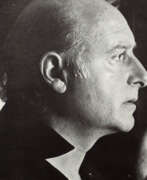

Domenico (Mimmo) Rotella was an Italian artist considered an important figure in post-war European art. Best known for his works of décollage and psychogeographics, made from torn advertising posters. He was associated to the Ultra-Lettrists an offshoot of Lettrism and later was a member of the Nouveau Réalisme, founded in 1960 by the art critic Pierre Restany.
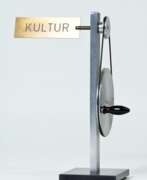

Konrad Balder Schäuffelen is a German psychiatrist, artist, author of concrete and visual poetry, and translator.
Schäuffelen earned a PhD in medicine and worked as a psychiatrist at the Max Planck Institute for Psychiatry in Munich. After training as a psychotherapist and psychoanalyst, he worked in his own practice and as a writer and translator in Munich.
In the 1950s Schäuffelen turned to experimental and visual poetry; from the early 1960s he mainly produced language and book objects as well as audiovisual installations. In 1979 he was awarded the Schwabing Art Prize in the plastic/sculpture category.
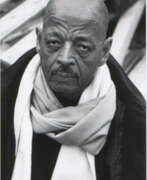

Hussein Shariffe was a Sudanese filmmaker, painter, poet and university lecturer at the University of Khartoum.[1] After years of schooling in Khartoum and in Alexandria, Egypt, he studied modern history and fine arts in England, where he had his first exhibition in London's Gallery One in 1957. Back in Sudan in the 1970s, he worked both at the Ministry of Culture and at the Faculty of Arts at the University of Khartoum. In 1973 he began a second artistic career as filmmaker, producing several documentary films and cinematographic essays on subjects such as traditional rites or history in Sudan, as well as on life in exile during his later years in Cairo. In his lifetime, he have painted more than 500 paintings, but only few of them have been documented.
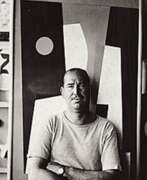

Charles Green Shaw was an American artist who painted in the style of abstract expressionism. Shaw began his career as a writer and poet, but later became a painter. In the 1930s he was one of the organizers and members of a group of artists who experimented with abstract art in New York.
He is known for his painting compositions in which he used bright colors and geometric shapes. In the 1940s, Shaw became more interested in abstract art and began painting in the style of Abstract Expressionism. His work included large abstract paintings as well as a series of prints and lithographs.
Shaw was one of the first American artists whose work was recognized in Europe. In the 1950s he was recognized for his work in the genre of Abstract Expressionism and was invited to participate in numerous exhibitions around the world.
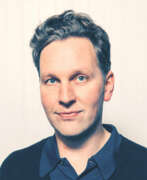

David John Shrigley is a British visual artist. He lived and worked in Glasgow, Scotland for 27 years before moving to Brighton, England in 2015. Shrigley first came to prominence in the 1990s for his distinct line drawings, which often deal with witty, surreal and darkly humorous subject matter and are rendered in a rough, almost childlike style. Alongside his illustration work, Shrigley is also a noted painter, sculptor, filmmaker and photographer, and has recorded spoken word albums of his writing and poetry.
